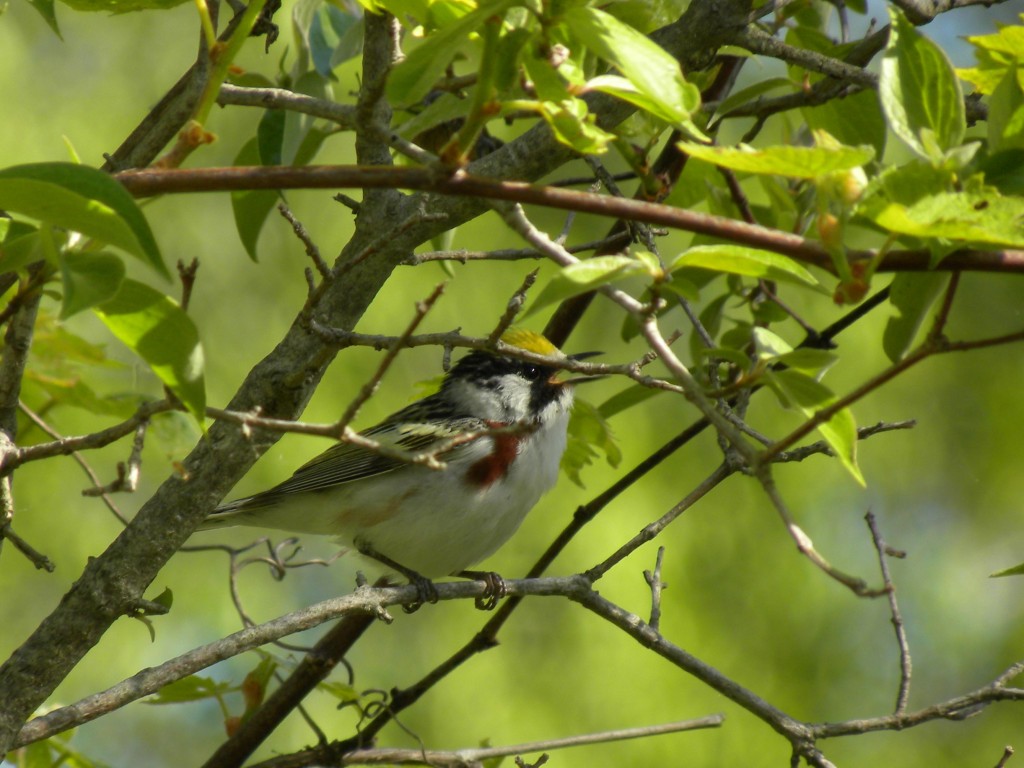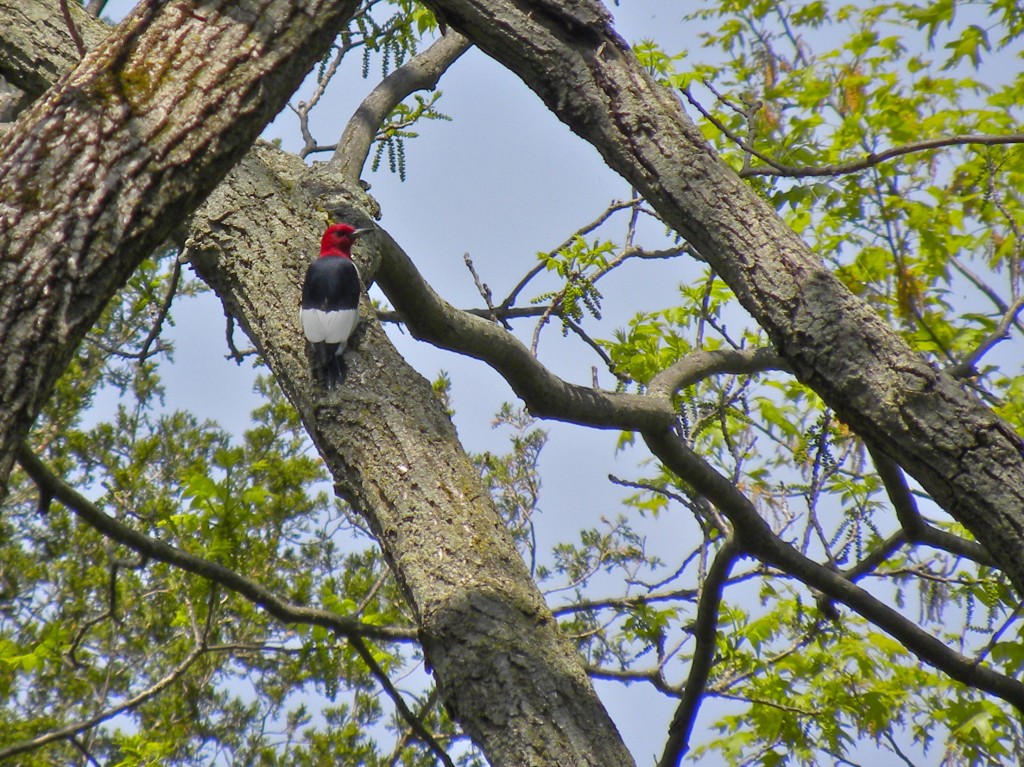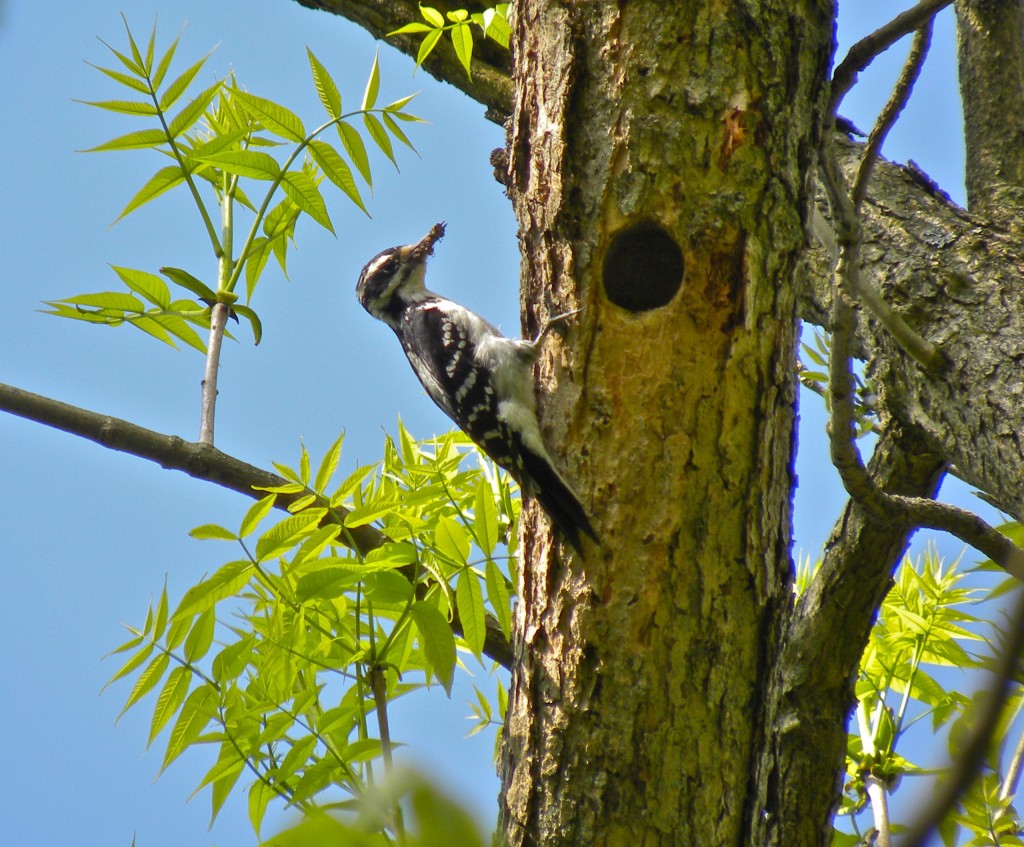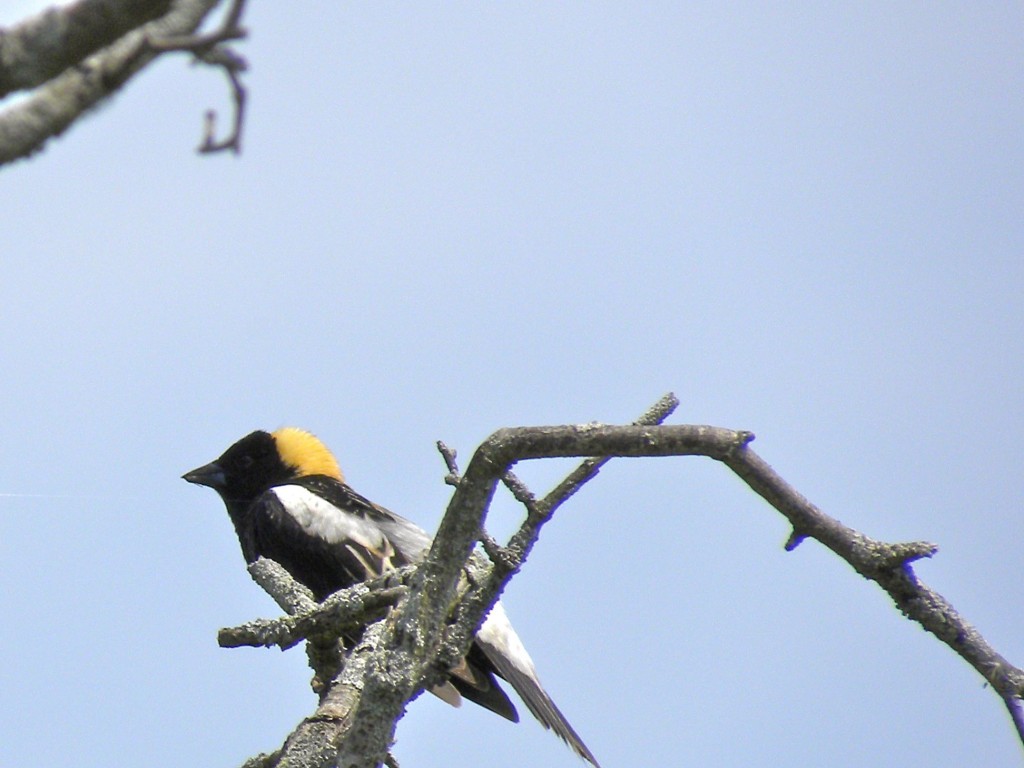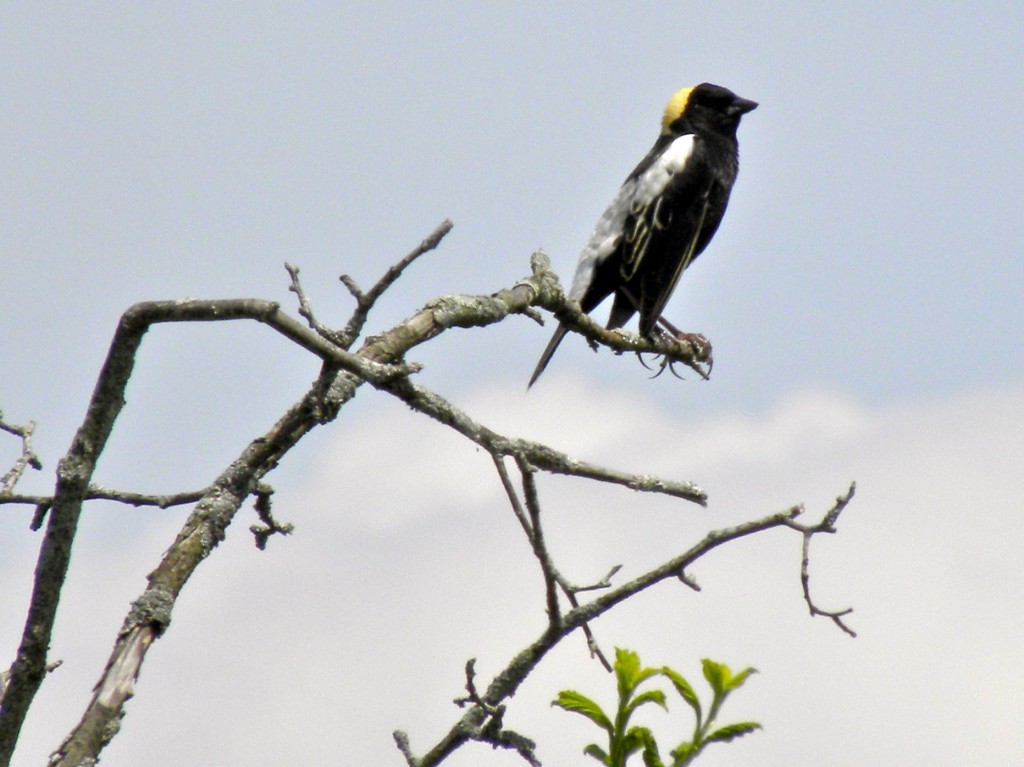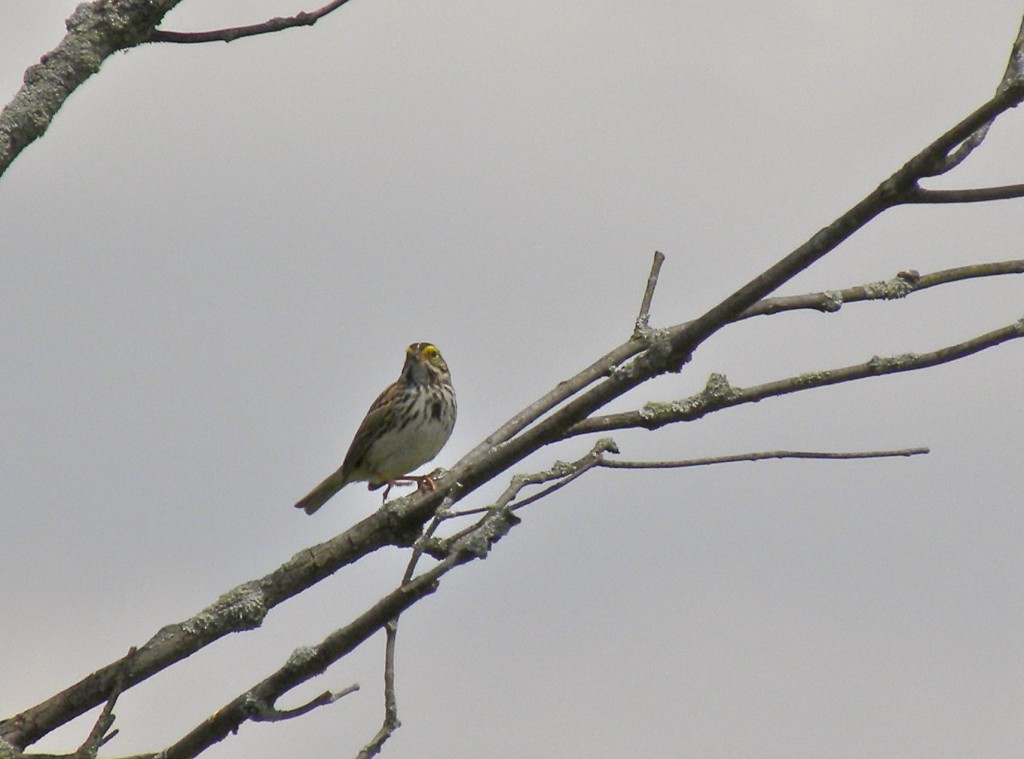May 21 2012. One of my most productive ways to see birds is to find an opening in the forest, somewhere with lots of edge habitat, lots of cover, maybe some water and preferably quiet and well lit. I find a reasonably commanding spot to sit or stand still; then I let the forest relax. Yesterday when I did this all was quiet for a long time, but what I didn’t realize was that I had parked myself within a few feet of a fledgling American Robin, spotted and spiky with a stubbly emerging tail. It too was just sitting silently on a branch but it was waiting to be fed; no doubt the parents knew where it and all of its siblings were. When the adult male arrived and saw me all hell broke loose, he started clucking and squealing urgently, the sort of loud and insistent alarm calls you hear when a cat strolls through a robin’s urban territory. Birds’ alarm calls like this attract other birds to find out what the problem is; maybe they’re there to help out, I’m not sure. Within moments yet more robins arrived, but the parent robin couldn’t tolerate their presence for a second and fiercely drove them off. Then in came a Gray Catbird, a female Red–winged Blackbird, male and female Common Yellowthroats, Baltimore Orioles, and Yellow Warblers. Then two warblers I’d be straining to find: a handsome male Canada Warbler and an American Redstart, and lastly an Eastern Towhee. All of them came to within a few yards of where I sat.
Today I tried the same technique but had little success, although I did hear the call of a Yellow–billed Cuckoofrom above and behind me. Cuckoos are a little mysterious, they arrive towards the end of the spring migration and seem to move secretively, dodging from one hiding place, high in a well-leafed deciduous tree, to another; glimpses are what you get. The European Cuckoo is well known for its onomatopoeic call and for being an obligate brood parasite; it always lays its eggs in the nests of other birds. Like its American cousins it is handsomely plumaged and in flight brings to mind a falcon: slender, fast and with pointed wings.
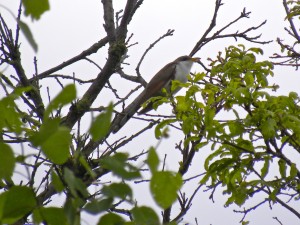
Later I stopped for a coffee to reflect on a successful day’s birding which had included Mourning, Magnolia, Wilsons, and Hooded Warblers as well as an Olive–sided Flycatcher, Philadelphia Vireo and Ruby–throated Hummingbird. Sitting at a picnic table looking across open parkland I spotted a sleek, fast moving falcon; or so I thought. But a moment’s thought and I knew I was seeing a Yellow–billed Cuckoo. I scooped up my coffee, binoculars and camera and moved closer. With a bit of neck craning I managed to find this elegant bird high in a cottonwood tree. After all of those warblers and vireos the cuckoo was a nice change and my Bird of the Day.
